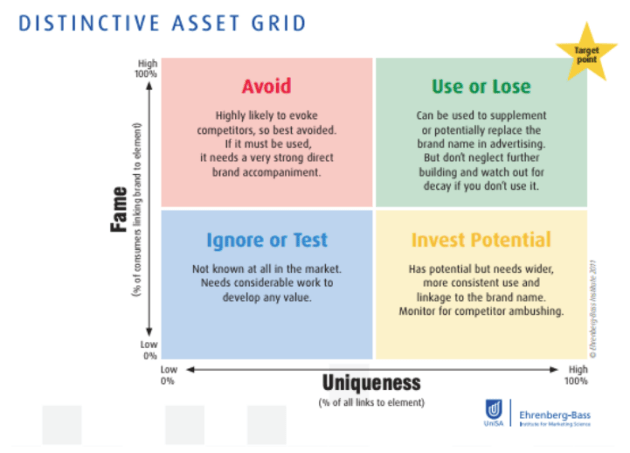How brands can harness creative data to build distinctive assets
Building distinctive brand assets is like having a cheat code for a brand’s marketing efforts. They are the logos, colours, typeface, sound signatures and shapes that signal to an audience that what they are seeing or hearing is unmistakably from a particular brand. They are the brand codes that identify the brand without the brand needing to be mentioned.
These codes act as a shortcut to the consumer’s mind, aiding cognition of advertising messages and clearly establishing a link between the piece of communication and the brand communicating it. Distinctive brand assets aren’t built overnight. In fact, work must be done to identify and build distinctive assets into something that is synonymous with the brand. This is where creative level data can be used to identify potential distinctive assets that should be invested in.
According to the Ehrenberg-Bass Institute, to assess a brand’s distinctive assets you need to look at how unique the asset is and how famous it is. Based on this research, brand managers can then make a call on whether to use, invest, test or avoid using those assets, as per the below quadrant map:
The Ehrenberg-Bass institute recommends assessing a brand asset’s Fame and Uniqueness in market to understand whether they could be a distinctive brand asset
Until recently, data would need to be collected via consumer research over a significant time period to gather an understanding of what was considered unique to the brand and how ‘famous’ those assets were. However, with the advent of creative element level data, there is now a fasttrack to understand what brand elements are driving advertising performance as wellas create a testing ground for potential distinctive assets. This is thanks to technology such as Google Cloud Vision tagging which scans imagery and attaches meta-data tags to the different elements in a piece of advertising collateral. As the collateral is run in a digital environment, performance data can be attached to those different tags, meaning marketers can understand the advertising performance of those elements. For example, a pet food brand might run different versions of their creative that each feature a different breed of dog. Based on the performance data attached to each dog, they could then understand which breed resonates most with their audience and start to optimise their future collateral to include that breed.
Read the full article in AdNews.






